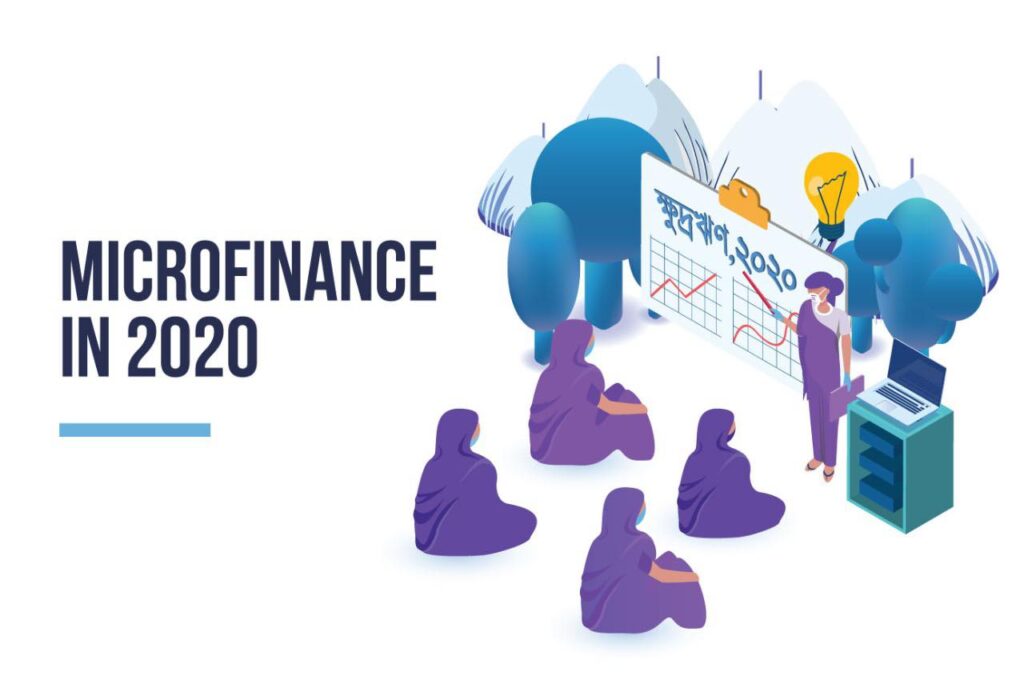
Narendra's BLOGS
Micro Finance – Need of an Hour
Published: Dec 24th, 2020 11:24 am By Narendra TiwariThe rural population in India constitutes about 70 percent of the entire populous. Development as we speak aims at its overall impact in the country today. Let not the rich have everything appears to be the motto. Freedom to achieve should not be restricted, as we must be prepared to extend it to everyone around us, whether rich or poor.
To address the ever deplorable economic situation of rural India, there is a need for structured development in these sectors of the country. The aim is to eradicate poverty, illiteracy and hunger from the face of rural India. Various poverty alleviation schemes have been suggested by the government for this purpose. However, the paucity of funds has proved to be detrimental to the implementation of such Schemes. Microfinance is one of those measures that can go a long way in poverty alleviation. It is a financial service scheme wherein the government, NGOs, and other financial institutions introduce several welfare schemes and activities to reduce poverty. A synergy is required among the MFIs, banks, NGOs and the government for the practice of good microfinance. In India a substantial portion of the micro finance system was based on self-help groups. It has been further suggested that NGOs should direct or teach the poor to invest their money through the MFIs into entrepreneurial development programs. These programs help in better savings and returns thereby facilitating their purpose.
Origin in India and the Urge behind it
The Indian microfinance scheme has been mainly inspired by the revolutionary movement that was started in Bangladesh by Mr. Muhammad Yunus. Both these movements have basically been adopted from the German and Dutch rural credit system called the Raiffeisen Model.
Thus the first issue to be addressed is as to why the need for micro financing was felt in India. Micro Credit is defined as the extension of very small loans to the poor and thus aims at spurring entrepreneurship. It is a part of micro financing. Banks are not able to extend credit to the extremely poor masses in the country because poor lack collateral, steady employment, verifiable credit history and these disqualify them from obtaining traditional credit.
The non-traditional methods of money lending have proved to be non-beneficial to the poor man. When we say old non-traditional money lending methods, it includes-money lenders, loan sharks etc.. To do away with such methods of money lending the concept of micro lending had to be introduced to promote actual growth among the poor. Rural finance stresses on savings and promoting self help groups who in turn promote savings.
Efforts in vain Towards Implementation
Since independence, various Governments in India have experimented with a large number of grant and subsidy based poverty alleviation programs. These programs were based on grant/subsidy and their credit linkage was through commercial banks only. As a result, these programs became unsustainable, perpetuated a dependent status on the beneficiaries and depended ultimately on the government employees for delivery. This not only led to misuse of both credit and subsidy but also as non-bankable and hence not profitable and commercial.
Potential and Scope
With 75 million poor households potentially requiring financial services, the micro finance market in India is among the largest in the world. Estimates of household credit demand vary from a minimum of Rs. 2,000 to Rs. 6,000 in rural areas and Rs. 9,000 in urban settings. Given that 80 percent of poor households are located in rural areas, total credit demand ranges between Rs. 255 billion and Rs. 500 billion. However, only Rs.18 billion of this amount has been generated so far. The reason for this is that a major portion for rural crediting has been from the informal sector and this is at a very high interest rate, thus reducing the volumes of such credits, and by far has been less for investment purposes (13%) and more for family emergencies (29%) and social expenditures (19%).
Micro Financing – A Blessing In Disguise
How micro financing is helping the poor come out of the clutches of extortionary financial agencies (e.g. money lenders) is something that has to be brought into the picture. It is easy to conclude that a poor individual cannot possibly provide collateral for any kind of loan. To fill this gap self help groups are formed where social capital is leveraged, by creating a joint liability, for a loan .This also ensures regularity of repayment. We are all aware that globalization has led to developments in technology. With development in technology the need for human resource is decreasing everyday. This is leading to lesser job opportunities for the poor illiterate masses. Micro-Finance, although not the final solution, helps that category of people uplift themselves and do something with their lives.
COMMERCIALIZATION and its Dire Need in the Present Scenario
Commercialization is a concept which should have been introduced in the case of micro financing way earlier than today. The micro-finance institutions cannot survive for very long on the charitable nature of the donors. Professionals, lately, have been stressing on the fact that market based principles (investments) should be applied to micro finance. The market based principles will help these institutions achieve sustainability and provide efficient services. Commercialization allows the MFIs bigger opportunities to fulfill their social obligations by providing the poor with increased access to credit. The micro finance draft bill of 2011 proposed by the Indian government covers very basic aspects of the functioning of these institutions. The bill should provide for a two-phase development of micro-finance institutions, wherein in the first phase they start of as mere providers of credit to the poor by the money raised out of benefactions and the later phase should allow compulsory commercialization of these institutions.
There is a need to go a level higher by calling for international investments like that of ‘Sequoia’ in SKS micro-finance of 11 million dollars. Dependency of these institutions on donors and government funding should be done away with. Commercialization will enable micro-finance institutions to grow. The development of MFI’s should not be time bound and should not be completely shut from any outside investment. Our gasconades of how these institutions reach to the meager levels of the society will just remain on paper. A necessary provision for compulsory commercialization of MFI’s as the second phase of development should be provided for. Commercialization helps in expansion of credit at relatively cheaper interest rates. Due to this, loan advancement to the poor can become easier. It is not just the involvement of banks that are important but also that of other sectors that can prove to be greatly beneficial for such institutions. There is a need to tap international capital markets for raising capital as this scale of financing is way larger in scope than expected. NGOs dealing in microfinance are seeking to convert themselves into NBFCs (Non-banking financial corporations) in order to pool in more capital i.e increase their funding.
CONCLUSION
Microfinance is important
Thus, Microfinance encourages entrepreneurship, increases income generating activity thus reducing poverty, empowers the poor (especially women in developing countries), increases access to health and education, and builds social capital among poor and vulnerable communities.
Equity Stock Market in 2020 January 1st, 2021 10:50 am
Bank Bad Debts.& Role of Collection/ Recovery Agencies December 31st, 2020 11:35 am
Equity Stock Market in 2020 January 1st, 2021 10:50 am
Bank Bad Debts.& Role of Collection/ Recovery Agencies December 31st, 2020 11:35 am
NET PROMOTER SCORE (NPS) for CORPORATES December 19th, 2020 09:44 am
HOW TO ACCERLERATE YOUR INSURANCE BUSINESS WITHOUT GOING OUT OF YOUR HOME November 26th, 2020 12:08 pm
Can we Buy Life Insurance for blood relations only ? November 20th, 2020 11:25 am

Comments
Add Comment